In late 2020, a group of conservative movement attorneys set out to build a legal pathway by which Donald Trump could stay in power, having lost the election.
We’ve known about the outcome of their work for three years now: how it led to the violence of Jan. 6, and fed the dream of Trump’s supporters that he might continue to serve after Jan. 20, 2021.
But TPM can now reveal the ways in which their theorizing, in early stages, went even further than previously known, imagining a Jan. 6 that lasted for not hours but days, an intervention by Supreme Court justices that they presumed to be loyal to President Trump, and a vice president who upended his constitutional duties, allowing the U.S. to descend into chaos.
A trove of documents obtained by TPM details many of the conversations among Trump campaign lawyers, and, in particular, the theories offered by Kenneth Chesebro, an attorney who worked with the campaign in the months leading up to Jan. 6.
Within weeks of Trump denouncing the election itself and claiming that he had won, Chesebro and Trump campaign attorneys around him began to explore more exotic legal theories in which endless chaos in Congress would prove that the legislature could not certify a winner. That stalemate, they theorized, would force the Supreme Court to act.
Chesebro, an appellate lawyer, provided a legal framework in which, he contended, Trump could still win — or at least cause enough confusion and chaos that the conservative Supreme Court would have to get involved in picking the president. His plan envisioned several gambits which have now become familiar building blocks of the legal portion of the coup attempt, and the basis for criminal charges across the country: creating slates of fake electors, having Mike Pence refuse to count Biden’s electoral votes on Jan. 6, and ultimately tossing the whole issue to the high court.
TPM obtained the trove of documents after Ken Chesebro supplied emails, texts, and memos from his time with the Trump campaign to Michigan prosecutors in Attorney General Dana Nessel (D)’s office, which has been investigating the fake electors scheme. Multiple defense attorneys for already-charged fake electors told TPM that they had received the documents as part of the discovery process in that case. After Michigan prosecutors sent out the documents, CNN and the Detroit News reported on his Oval Office encounter with Trump and the fake electors scheme using records from the same trove obtained by TPM.
The thousands of emails, memos, and texts only represent what Chesebro experienced directly and what he chose to share. Other emails and texts among Trump lawyers from which Chesebro was excluded are not included here. The records are not comprehensive of the Trump campaign’s entire effort to reverse the President’s loss; they reflect what Chesebro provided as he sought to avoid further prosecution, and what reached TPM.
Specifically, some of the documents not in the trove obtained by TPM include a portion of Chesebro’s communications with another Trump attorney. Chesebro also sat for a 4 and a half hour long interview with Michigan prosecutors in December 2023 as part of his cooperation and recounted his actions from three years before. He told prosecutors in the interview that many of his communications with Boris Epshteyn, the Trump surrogate and attorney who reportedly appears in Jack Smith’s D.C. Jan. 6 indictment as co-conspirator 6, took place via Signal. Those were deleted automatically, he said.
Overall, the trove of documents details how Chesebro gave the Trump campaign what it desperately wanted: procedurally and substantively radical ideas which would allow the President to exert maximum leverage on any body or person in the country that might conceivably have the power to keep him in office. TPM provided Chesebro’s attorneys with a list of questions; in an interview, they offered broad responses characterizing their client as someone who loved to theorize, and who was convenient for a Trump campaign which had already decided that it was going to try to keep the election unresolved as long as possible. “He’s the only one that could validate what he was saying through facts and law, versus talking about space lasers and Hugo Chavez,” Chesebro attorney Manny Arora told TPM.
The trove includes encounters that, in typically Trumpian fashion, range from the showy to the menacing to the bizarre. At one point, Chesebro infuriates former chief of staff Reince Preibus by telling Trump in December 2020 that he still has a chance at winning on Jan. 6; at another, John Eastman speculates that Chief Justice John Roberts might be on their side if not for fear of how “to account for the riots angle” should the Supreme Court declare Trump the winner. Chesebro at one point referred to Pence declining to open electoral votes from Georgia as a “fairly boss move;” at another, he forgets that Biden, and not Pence, was Vice President in 2016 while asking a Pence attorney about his plans for Jan. 6, 2021.
The trove provides a definitive account of how a small group of attorneys, dedicated to Trump, designed and tried to implement the portion of the coup attempt which unfolded via legal arguments. They burnished the former president’s efforts with a veneer of respectability that at times masked their radicalism: This portion of the effort to reverse Trump’s loss did not proceed via loud claims of voter fraud or through Sidney Powell’s promise of a “Kraken” lawsuit that would wipe her enemies away, nor did it move forward through the actions of mobs and street thugs primed to seize the Capitol on Jan. 6.
Rather, the attorneys involved all had extensive experience in the practice of law. Chesebro is a Harvard Law graduate who spent much of his early career working on appellate cases with liberal commentator and Harvard Law professor Larry Tribe. John Eastman was a longtime conservative movement attorney who had been dean of Chapman University Law School. Others, like Pennsylvania attorney Bruce Marks, had built careers out of an extensive civil practice.
TPM is beginning this series with an exclusive story examining the plan to extend Jan. 6 for weeks — until Congress, the Supreme Court, or, in Eastman’s view, state legislatures filled the void by declaring Trump the winner. It’s shockingly congruent when matched up with the reality of what ultimately took place through violence, not legal maneuvering: as Vice President Mike Pence refused to go along with one version of the plan, an angry mob forced a partial delay by storming the Capitol.
Overall, what the Trump attorneys developed was an elaborate fantasy of epic proportions. Chesebro emerges as an attorney willing to push the bounds of the law, but who is unmoored from a basic sense of proportion. He seems, in the documents TPM obtained, to lack an understanding of the import of his proposals, and also of some professional faux pas: many long memos examining various theoretical scenarios appear to go unanswered, before Chesebro follows up with more lengthy memos further elaborating on his theories.
During the interview with prosecutors, Chesebro cast himself as the latest in a long line of attorneys to be victimized by Trump and those around him. He blamed the campaign for throwing him under the bus in the years after the Capitol insurrection, suggesting that the campaign ordered him to stay quiet, while also casting him to the Jan. 6 Committee as a rogue attorney, all while refusing to pay his legal bills.
“It’s been a real lesson in not working with people that you don’t know and are not sure you can trust. It really went south for me,” Chesebro told prosecutors. “I had a wonderful apartment in NYC that I had to sell for a $2 million dollar loss, and lost almost all my net worth because of the attorney bill.”
While much of Trump’s effort to reverse his loss unfolded in full public view, with Trump publicly announcing his plans and threatening Pence and others to cooperate, the Chesebro documents offer a look at the portion of the coup attempt which proceeded behind closed doors: how elements of the legal strategy were devised, including both the longshot bids to throw an elephant-sized wrench in the gears of Congress and more mundane but telling examples of how the Trump campaign chose which lawsuits to bring before the Supreme Court. That includes calculations from Eastman about how many states needed to have their results contested in order for the Supreme Court to be able to overcome Trump’s electoral vote gap.
In late 2022, TPM brought you The Meadows Texts: a definitive, comprehensive look at how the White House chief of staff coordinated the scheme to subvert the 2020 election. Now, with the Chesebro documents, we have a view into how one of the main legal architects of the coup advocated for his ideas — which were far more successful than anyone could have predicted, and included discussions of unrealized, theoretical possibilities that were far more radical than we knew. It’s the anatomy of a legal coup, but also something else: an attempt to twist the law in order to instigate a constitutional crisis.


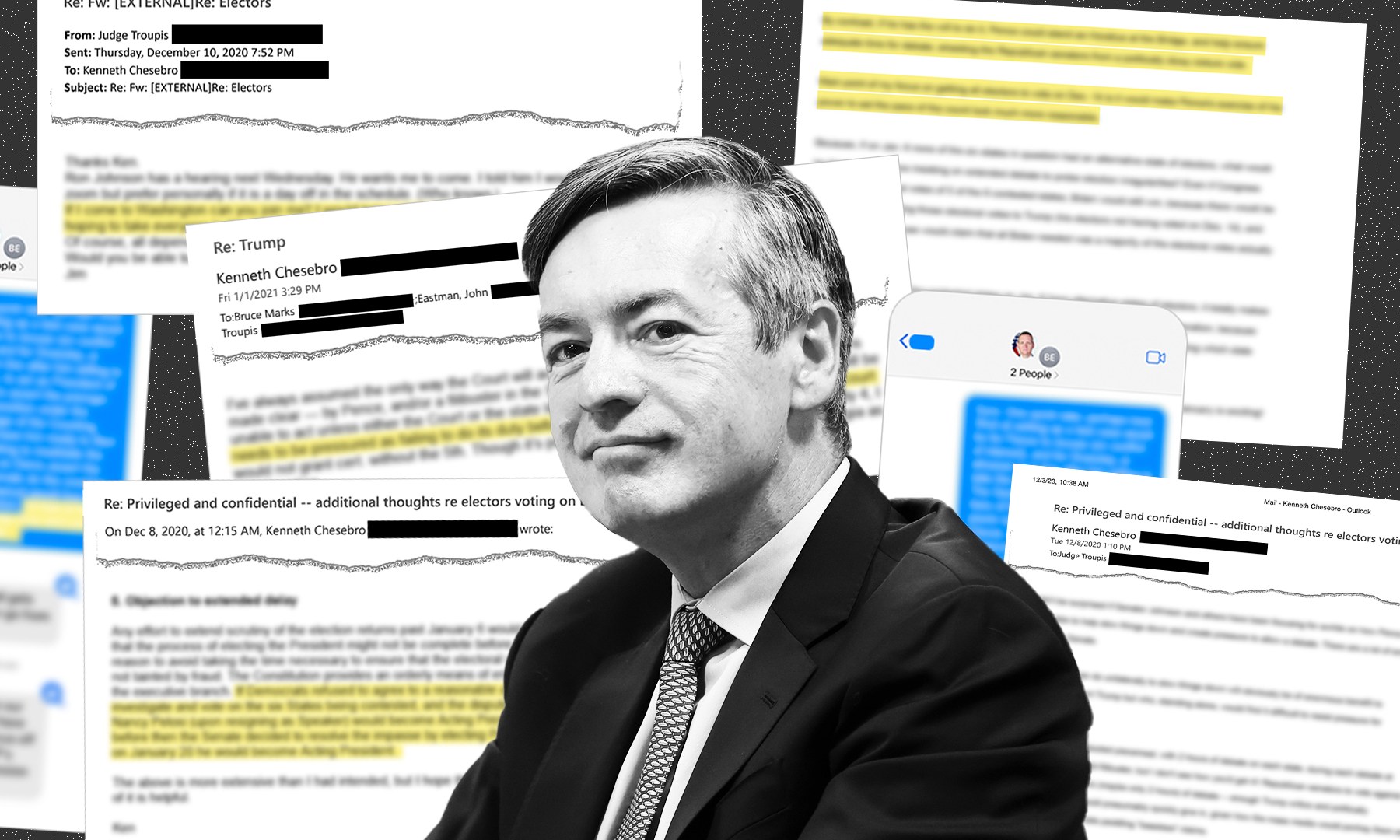

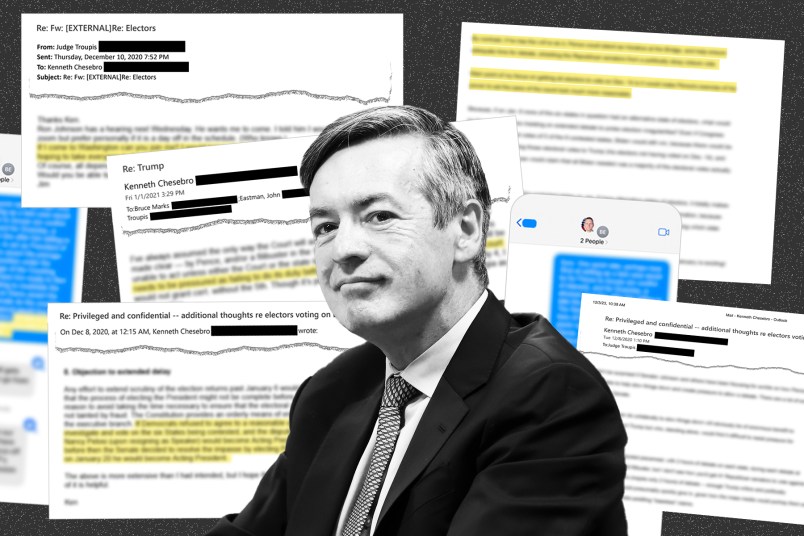
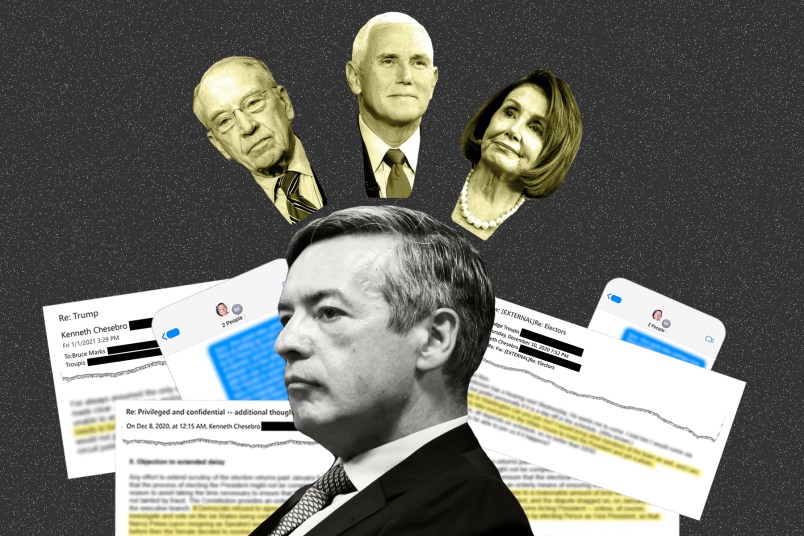
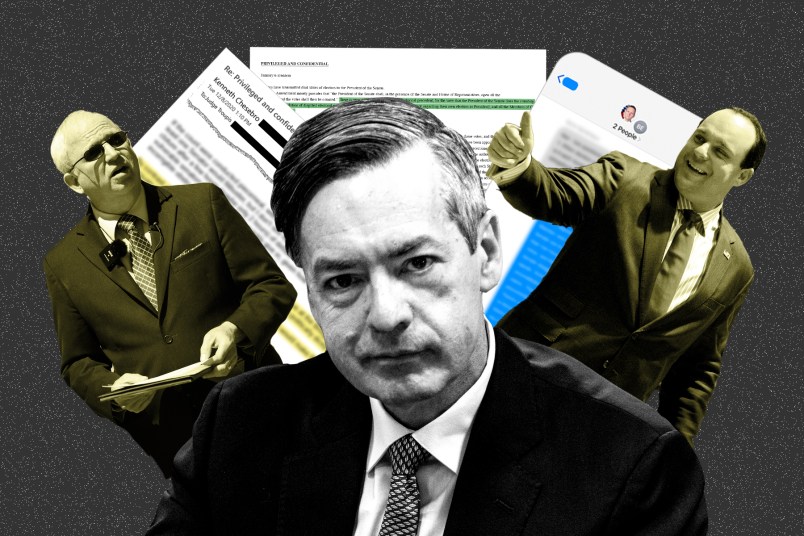
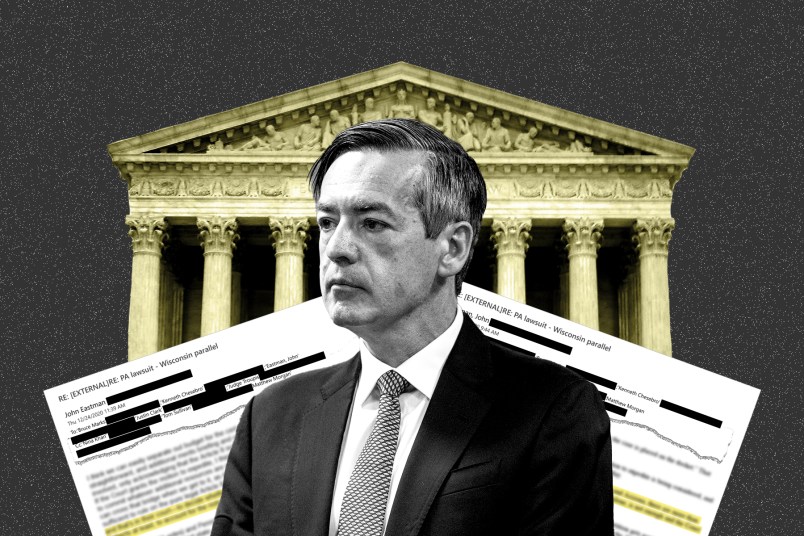
It was a coup. That it “failed” (at least as of 02.12.24) does not change its intent, or the scope of its criminality.
[e/t/a: kinda glad this dropped the DAY of the SCOTUS immunity hearings.]
We can safely say these lawyers were creating a “legal” framework, as compared to a legal framework.
But so it goes with authoritarians and the fools that choose to associate with them. Cheseboro at least has landed on his only defense, because I guess everyone is a fool about something at sometime.
Another feather in the cap of Harvard for turning out such a stellar lawyer.
Somehow, I’m having trouble working up any sympathy for him.
Wow. They seriously were prepared to overthrow the American system for the orange excrescence. And meanwhile, our Republican “friends” are cool with it:
https://www.msn.com/en-us/news/politics/let-trump-be-dictator-for-a-day-74-percent-of-republicans-say/ar-BB1hVrRu